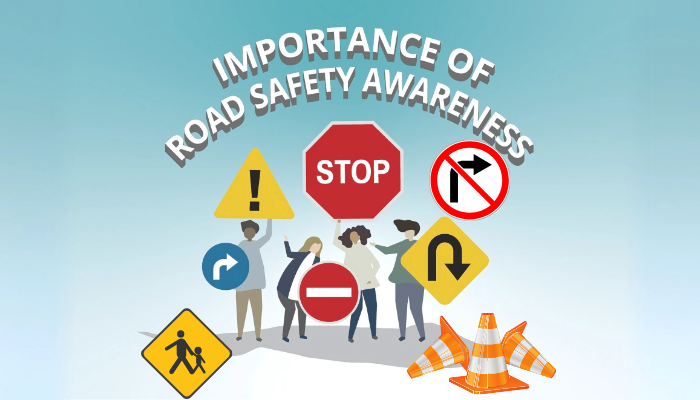Reducing Road Accidents: The Role of Driving Theory Education in Public Safety is a critical topic that affects millions worldwide. Every year, road accidents cause countless injuries and fatalities, making it essential to focus on preventive measures. One of the most effective ways to enhance public safety is through driving theory education. A well-informed driver is less likely to make mistakes that lead to accidents. This blog serves as the Jeju Unicorn on how driving theory can reduce road accidents and save lives.

The Importance of Driving Theory Education
Understanding traffic rules and regulations is crucial for all drivers. Proper knowledge of driving theory helps individuals make better decisions on the road, reducing the chances of accidents.
- It teaches the meaning of road signs and signals.
- It emphasizes the dangers of reckless driving.
- It helps new drivers understand defensive driving techniques.
How Lack of Knowledge Leads to Accidents
Many accidents occur due to ignorance or misunderstanding of basic traffic rules. Drivers who lack proper education may:
- Ignore traffic signals.
- Misjudge the speed and distance of other vehicles.
- Fail to yield the right of way.
By improving driving theory education, we can significantly reduce these risks.
Driving Theory Education vs. Practical Training
Driving education consists of both theoretical and practical components. While practical training teaches drivers how to operate a vehicle, theory education ensures they understand the rules of the road.
| Aspect | Theory Education | Practical Training |
|---|---|---|
| Focus | Road rules, safety measures | Vehicle handling, maneuvering |
| Learning Method | Classroom, online courses | Hands-on driving experience |
| Key Benefit | Awareness of legal and safety guidelines | Skill development and vehicle control |
| Essential for Beginners | Yes | Yes |
Why Both Are Important
- Practical training without theory can lead to reckless driving.
- Theory education without practice makes it difficult to apply knowledge on the road.
- A balanced approach ensures well-rounded and responsible drivers.
The Role of Driving Theory in Reducing Road Accidents
Reducing Road Accidents: The Role of Driving Theory Education in Public Safety is directly linked to how well drivers understand and follow road regulations.
How Theory Education Prevents Accidents
- Enhances Decision-Making Skills
- Drivers can anticipate hazards and react appropriately.
- Helps in identifying dangerous road conditions.
- Encourages Responsible Behavior
- Teaches the risks of speeding and reckless driving.
- Promotes adherence to seat belt and helmet laws.
- Improves Awareness of Traffic Laws
- Ensures drivers follow speed limits.
- Helps in understanding pedestrian rights.
Case Study: Countries with Strong Driving Theory Education
Countries that emphasize driving theory education have fewer road accidents. For example:
| Country | Driving Theory Requirement | Road Accident Reduction (%) |
| Sweden | Mandatory theory test | 25% |
| Germany | Intensive theoretical training | 30% |
| Japan | Strict theory and hazard perception training | 35% |
The Connection Between Road Safety and Driving Tests
A comprehensive driving test includes both theoretical and practical components. Reducing Road Accidents: The Role of Driving Theory Education in Public Safety depends on how well these tests evaluate a driver’s knowledge.
Elements of a Good Driving Test
- Theory Section: Covers traffic laws, road signs, and safety measures.
- Hazard Perception: Tests a driver’s ability to recognize potential dangers.
- Practical Test: Ensures the driver can apply theoretical knowledge on the road.
Common Mistakes Due to Lack of Theory Knowledge
- Misinterpreting road signs.
- Failing to understand lane discipline.
- Ignoring pedestrian crossings.
By making driving tests more rigorous, we can ensure that only well-informed drivers are on the road.
The Digital Age and Online Driving Education
Technology has transformed the way we learn. Reducing Road Accidents: The Role of Driving Theory Education in Public Safety has become more accessible through online courses and mobile apps.
Benefits of Online Driving Theory Courses
- Convenience: Learn from anywhere at any time.
- Interactive Learning: Quizzes and simulations enhance understanding.
- Affordability: Online courses are often cheaper than classroom training.
Popular Online Driving Theory Platforms
| Platform | Features |
| Driving-Ed.com | Interactive lessons, practice tests |
| SafeDriver | Real-time hazard perception training |
| RoadSmart | Government-certified courses |
Community Awareness and Government Policies
Governments and local communities play a significant role in Reducing Road Accidents: The Role of Driving Theory Education in Public Safety.
Government Initiatives for Road Safety
- Mandatory Driving Theory Tests: Ensuring all drivers pass a knowledge exam.
- Public Awareness Campaigns: Promoting road safety through media.
- Stricter Penalties: Fines for violations encourage compliance.
Community-Led Efforts
- Schools integrating road safety lessons in their curriculum.
- Local workshops offering free driving theory classes.
- Social media campaigns spreading awareness.
Future of Driving Theory Education
With advancements in technology, Reducing Road Accidents: The Role of Driving Theory Education in Public Safety is expected to improve.
Innovations in Driving Theory Learning
- Virtual Reality (VR) Simulations
- Provides real-life driving scenarios.
- Enhances hazard perception skills.
- AI-Powered Learning Platforms
- Personalized learning experiences.
- Immediate feedback on test performance.
- Integration with Autonomous Vehicles
- Preparing drivers for future road technologies.
- Teaching co-existence with self-driving cars.
Conclusion
Reducing Road Accidents: The Role of Driving Theory Education in Public Safety is an essential part of building safer roads. A well-structured driving theory education system ensures that drivers understand traffic laws, develop hazard perception skills, and adopt responsible behaviors. Governments, communities, and technology providers must work together to enhance road safety education. By prioritizing theoretical knowledge, we can significantly reduce road accidents and save lives. Investing in driving education is investing in public safety, making our roads a safer place for everyone.